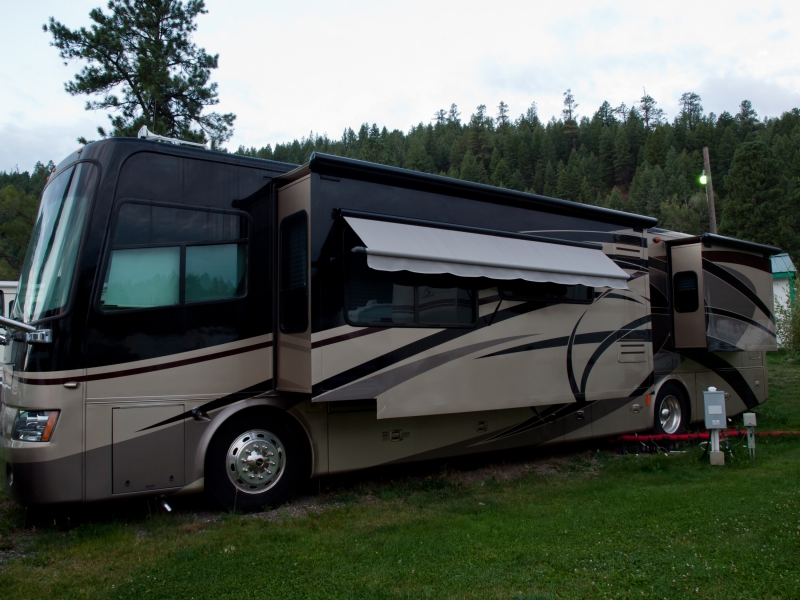Our recreation vehicles are composed of a complex, engineered arrangement of parts that all together are comprised of substantial weight and size. But sometimes those parts don’t work together harmoniously, or something in particular goes awry.
The tires that get our RVs from Point A to Point B to Point C and so forth are essential for us to enjoy our RV lifestyle – and essential for you and your family’s safety on the road. They’re expensive, but they are a necessary part of your RV to monitor and replace as necessary. And sometimes, tires can age prematurely. So how can you help extend the life and durability of your RV tires?
Maintain appropriate air pressure.
Check the air pressure every two to four weeks and before any major trip. This is best done in the morning or in a controlled environment as hot air can artificially inflate the actual pressure reading. Maintaining proper inflation helps extend the life of your tires and makes them less likely to suffer damage, poor handling, irregular wear, or decreased fuel economy. Improper inflation – too high or too low – can reduce the life and usefulness of your tires. Consult your RV and tire manufacturer to determine optimal air pressure.
Protect tires from the elements.
Ultraviolet light, snow, rain, and other environmental factors can prematurely age your tires. If you aren’t a full-timer and need to store your RV for part of the year, consider storing your RV in a cool, dry, protected garage. If that’s not an option, then place a barrier such as piece of plywood between the tire and the ground surface to at least buffer the elements. Weather cracking or checking can occur if the tires are exposed to heat and sunlight. When you’re not on the road, consider using tire covers to help protect your wheels from such exposure.
Watch the weight – and balance.
Be aware of how much loaded weight rests on each axle and wheel position, and try to have equal distribution, which may require moving around cargo or payload. Too much weight can overload what your tires can handle, leading to an accident. An RV can be within its Gross Vehicle Weight Rating but still overloaded or out of balance. Stop and get your RV weighed at a public scale to ensure you’re within the “green zone.” When in storage, you can put your RV up on blocks to safe your tires from the weight of the RV to help extend the life. If blocks aren’t possible, then make sure the RV, when in storage, is at minimum weight, that the vehicle is on a flat surface, and inflate the tires to the manufacturer’s recommended inflation pressure.
Keep apprised of mileage and age.
It’s a common question: Do you replace tires based on the mileage or age? Well, both are important. The average length of time RV tires stay in service is five to seven years, but it also depends on how the tires were used in that time. To help remember when tires were manufactured, an RV tire should have its “birthday” right on the sidewall, as required by the U.S. Department of Transportation — for instance, “DOT0211,” with the first two digits indicating the week and the second pair indicating the year. Be aware of this date, but also be aware of how many miles tires are “supposed to last.” Since many RVers use their recreation vehicles only a portion of the year, it would take a long time – many years – to reach, say, 100,000 miles. Those years of being on the road, though minimal for some compared to others, and being exposed to the elements still have an aging effect on the tires. But not using the tires, such as being in storage six months of the year, still has an aging effect because the tires were designed to remain lithe with use.
What does all this mean? Base your tire replacement needs on the appearance of the tires, and consider having your rig inspected by a professional annually once you’ve reached the five-year mark.
Check out MARVAC’s list of RV dealers, services, and providers on our interactive map!

